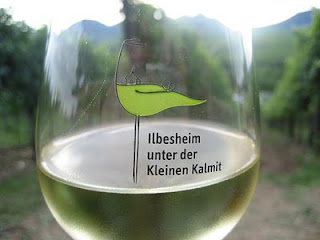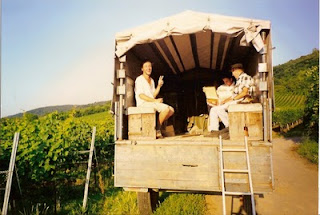
It's been a rather enjoyable few weeks. Firstly, we went home to
Lytham St Annes in north-west England to see my parents, and last weekend saw us visit the Pfalz again on another winefest jolly.
Unfortunately, it rained a lot during our time back in
Blighty. Moist, ashen skies like the one here in Blackpool (see photo) were par for the course. Not that it dampened our spirits. Activities included an afternoon in the torrential rain of the
Lake District, a round of
pitch and putt with Jenny in St Annes, a day of barbecue and drinks with family and friends, the obligatory meal of fish and chips, and the even more obligatory trip to
The Taps in Lytham. Ironically, a local hose-pipe ban had been in force before our arrival, owing to a lack of precipitation in recent months. I suspect this ban may already have been lifted by the time we flew back to Switzerland.
On arriving back in Basel, it seemed as if the rain had followed us. Luckily, the weather up in the Pfalz held sufficiently at the weekend to enable ample outdoor activity. The object of our visit was the "Kalmitfest", a lovely winefest that takes place literally in the middle of vineyards on the side of the
Kleine Kalmit hill that overlooks the village of Ilbesheim. This 270-metre elevation set off to the east of the vineyard slopes bordering the
Pfälzerwald offers a unique microclimate and a variety of soils (
chalk, marl, loess and loam).

Earlier in the day, however, we made our way to Birkweiler to take in some of the village's 725th anniversary festivities, which by coincidence also happened to be taking place that weekend. We settled down at Weingut Siener for a mid-afternoon "lunch" and a small aperitif - the same Riesling I covered
here a few months ago - before continuing on our trek to Ilbesheim.
Sven Leiner and
Boris Kranz are two young local winemakers who have been making waves in recent years, and I was particularly interested in trying some of their wines at the Kalmitfest. For some reason, we never got round to ordering a Kranz wine, but we did try a glass of Leiner's
Calvus Mons and
Fusion rosé respectively. After taking a whiff and gulp of the Calvus Mons, I instinctively thought it was more than a touch maderised. The colour of the wine also looked suspiciously over-cooked. To my slight embarrassment when taking the glass back to inquire, the woman who had served me explained that the wine had been fermented spontaneously, i.e. via the natural yeast flora in the grapes and in the air, and that this oxidised characteristic in the wine was completely normal. Still, she gave me the benefit of the doubt and refilled my glass. With the best will in the world, I was still unable to take to Calvus Mons. Perhaps wines with this "sponti note" - as the Germans call it - are an acquired taste, or perhaps the disappointment I felt was down to my uneducated palate. Despite this initial knock-back, I intend to persevere with Weingut Leiner.
Another peculiarity of the Kalmitfest is the opportunity given to the public to taste Pinot Blancs from ten different Pfalz producers short-listed for the annual "Weissburgunderpreis". Down in the centre of the village, the ten wines were laid out in a row, and for EUR 3.50, you had the chance to taste them all and cast your vote. A novel idea. Our problem with this set-up, however, was that each wine was poured freezing cold in a noisy, crowded environment. What is more, it was near the end of our evening, and our objective faculties were somewhat blunted by that stage. After only two wines, we gave up and

slowly walked back to our hotel in Leinsweiler.
Despite these minor dud notes, our overriding memory of the Kalmitfest is an extremely pleasant one. Enjoying the fantastic setting from our perch on the hill, watching the sun go down in the west behind the forest, chatting to fellow "fest-goers", sipping wine amid the vines and simply soaking up the atmosphere... It could hardly have been better.

